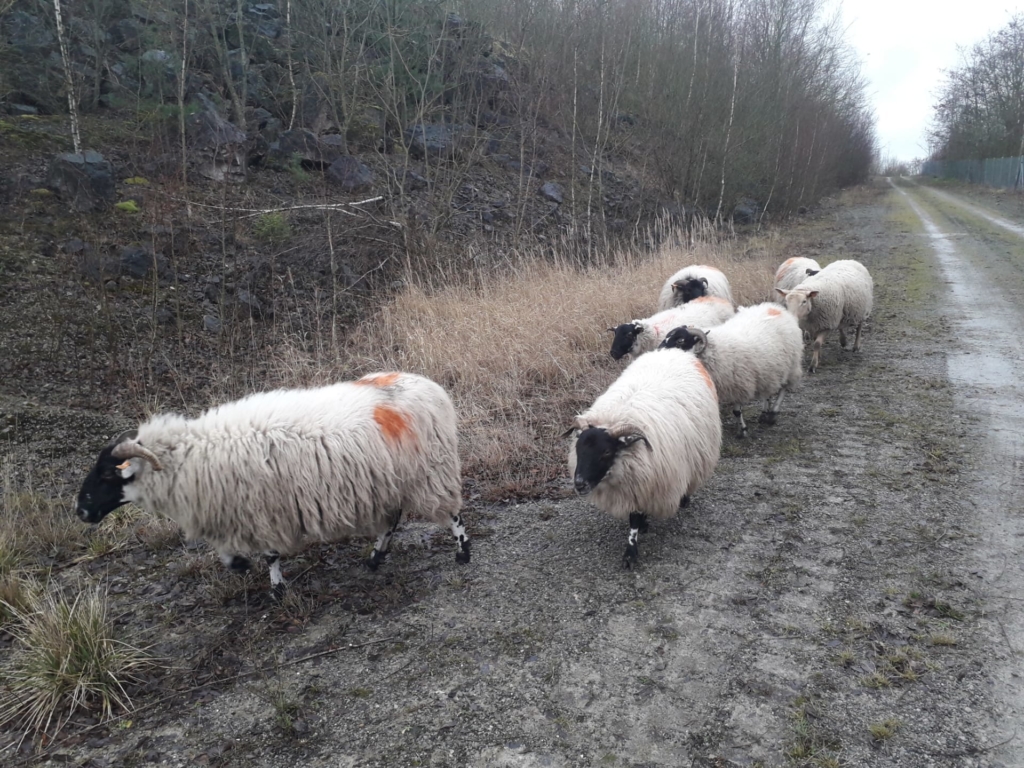Eco-grazing or extensive grazing is making a strong comeback for the
management of public, private or protected areas with high ecological value.
This enthusiasm is due to its economic, social and environmental benefits. In
addition, grazing allows the management of inaccessible or impractical
environments through a mechanical management.
 The sheep species selected are hardy and resistant breeds that can withstand winter and poor soils.
The sheep species selected are hardy and resistant breeds that can withstand winter and poor soils.
We talk about eco-grazing when the objective is to maintain or improve the biodiversity of
a site. To achieve this goal, several guidelines must be respected:
- No fertilization and pesticides: Soil fertilization benefits only a small number of fastgrowing plant species. If soils are fertilized, these species will tend to “choke” the
other plants. As regards the pesticides, they are unsurprisingly harmful to many
plant and animal species; - Reduced livestock density: the grazing period, the length of time and the number of
animals are decisive factors in ensuring the extensive nature. A precise grazing plan
must be established according to the plant species present on the parcel; - Limitation of drugs: drugs given to animals are found on the ground via their
droppings. These drugs, such as dewormers for example, can have an impact on
wildlife in the grasslands; - Favoring rustic sheep breeds: These breeds are naturally more resistant to diseases
and adapted to climatic conditions. This choice also helps to save local breeds
abandoned by modern breeding; - Maintenance of refuge zones, elements of the ecological network: wherever
possible, these restorations are coupled with other actions, such as the digging of
permanent ponds, the installation of hedges, shelters, or scree to diversify habitats
and create a real ecological network.
These voluntary initiatives can be supervised by Natagriwal and are subsidized the agrienvironmental program (MAEC) which consists of putting in place practices favorable
to the protection of the environment (preservation of the biodiversity, the water, the soil,
the climate), the heritage conservation (animal or plant) and the maintenance of
landscapes.
ECO-GRAZING IN THE QUARRIES
The peripheral zones of the quarry sites constitute an important opportunity for the
restoration of limestone or acid-loving grassland depending on the type of rocks
concerned. The restoration of these environments involves different types of work such as
clearing, deforestation, seeding or hay transfer and control of invasive plants (eg buddleia,
acacia, …).
 Quarry workers building the fence for the sheep pen.
Quarry workers building the fence for the sheep pen.
Then fencing allows for long-term grazing management in association with
local stakeholders. The arrival of the first sheeps (our teams selected 3 hardy breeds to eco-graze the heights of operative quarries : the Soay sheep, the spotted Ardennes and Ardenne reds) in some LIFE quarries signals the culmination of this major project.



